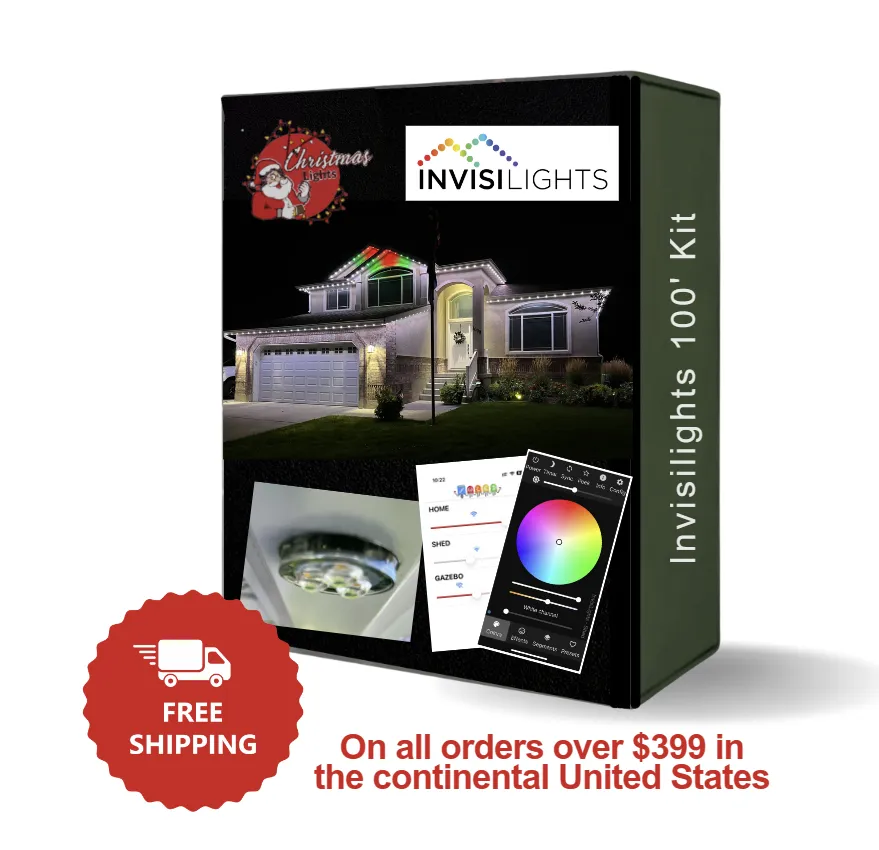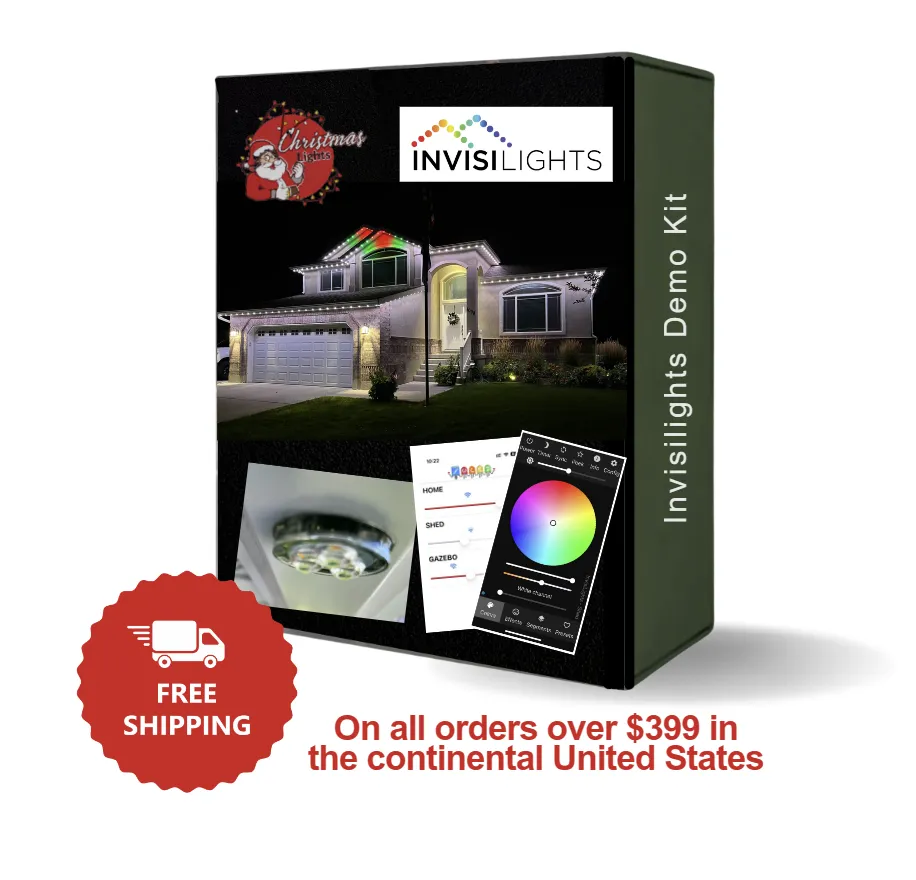Invisilights
Permanent Holiday Lighting
Customizable Lights for Any Event
WHAT YOU NEED TO KNOW BEFORE ORDERING
Total Linear footage of the installation.
This should include footage of lights and channel along with any Extensions or jumps you'll need to make
Where your controller box will be located
This is the most important step to planning out an installation, Without knowing where the controller will be you'll have no way to know the right materials to buy when it comes to extensions and accessories.
What Voltage system you want to use 24V or 36V
This is a decision you will make based on convince and efficiency, the most important factor with this will be the footage of each lighting run. If the total footage of a run is over 100' you'll need to either power inject on that run or switch to the 36V system that can go up to 200' before needing power injection.
Draw a Map
By mapping out the installation you'll be able to better understand and plan out the install giving you a better idea of what all you'll need to purchase to complete the job.
take the measurements from your map and add up the total number of materials you'll need.
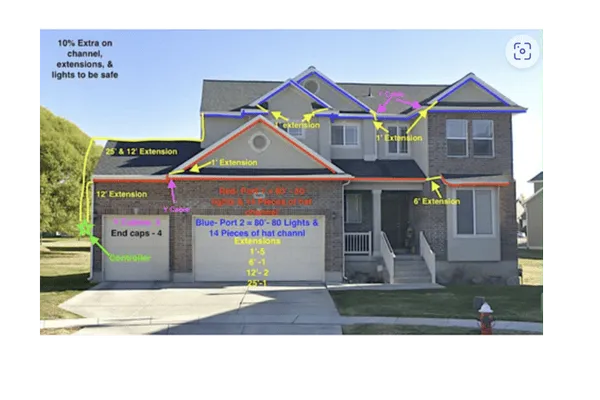
For the Map out example above the total material breakdown is:
System Voltage: 36V
Color of channel: Cameo
Channel Type: Hat
Total Lighted Footage: 160'
Power injection: NO
Controller: 1
Channel: 27- 6' sticks
Screws- 200
Lights: 175
1' extensions-7
6' Extensions-2
12' extensions-2
25- extensions- 1
Y Cables- 3
End caps- pack of 10
Absolute necessities
-Controller
-Lights
-Channel
-Screws
-Extension cables
Other Accessories
-Y Cable
-End Caps
- Signal boosters
-Power injection material
When would you need to power inject?
The controller will come with 3 outputs for your lighting runs, each 36V output can do a Max of 200', the 24V system can do a max of 100'. After that max you'll need to inject power. After you do so you can go an additional 100' with the 24V or 200' with the 36V system.
Power injection is needed due to voltage drop, voltage drop happens due to the length traveled away from the power source along with the gauge of the wire. due to the gauge of wire the lights and extensions run on it drops in voltage enough at 100' with the 24V system and 200' with the 36V system to effect the lights performance requiring a addition of power (Power Injection)
Materials needed for power injection 36V
Power injection pig female pig tale
Power injection Extension cables
Power injection T Cable.
Materials needed to Power inject 24V
16/2 - 12/2 Low voltage landscaping wire
Cut and Splice T cable
Water Proof Wire connectors
Discover the Transformative Power of Invisilights: Expertly Installed Permanent Lighting Solutions
Enhance your installation offerings with Invisilights, the premier permanent lighting solution designed for seamless integration into any property’s exterior architecture.
Crafted with high-quality aluminum channels and advanced LED technology, Invisilights delivers durability and superior energy efficiency—key selling points for your clients seeking long-lasting, cost-effective lighting solutions. Our system not only provides brilliant illumination but also boosts the aesthetic appeal and functionality of any home.
Offer your clients peace of mind with our robust 5-year warranty, ensuring reliable performance and minimal maintenance needs. This warranty supports your commitment to quality and customer satisfaction, making it easier for you to sell and install with confidence.
Our flexible, programmable system allows you to meet any client’s specific desires—from subtle accents to full-scale holiday displays—making it an adaptable choice for various applications. With Invisilights, you can cater to a wide range of preferences and needs, increasing your market reach and customer retention.
Choose Invisilights for your installations and add a transformative product to your portfolio that will impress clients and ensure your services remain in demand for years to come.
Frequently Asked Questions
What exactly comes in the 150' InvisiLights permanent outdoor lighting kit?
The InvisiLights kit is comprehensively equipped to ensure you have everything you need for installation. Each kit includes:
27 sticks of 6-foot Aluminum Channel to house and protect the lighting elements.
150 feet of dynamic RGBW LED Lights, which includes 23 sets of 6-count and 14 sets of 1-count lights, allowing for extensive coverage and diverse configuration options.
2 Data Boosters to enhance signal strength across the lighting installation, ensuring consistent control and color output.
A 320W Power Supply capable of supporting up to 190 puck lights, providing ample power for even the most extensive setups.
1 GFCI Outlet Adapter to ensure safe outdoor electrical connections.
1 Controller that allows you to manage and customize the lighting effects easily.
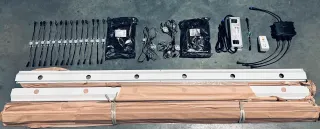
Will I need any additional components besides what's included in the Invisilights permanent lighting kit?
While the Invisilights kit comes with all the essential components for a standard installation, there are a couple of scenarios where you might need additional items:
Jumper Wires: Depending on the layout of your installation and the number of gaps or 'jumps' between the sections of lights, you may require jumper wires. These wires help bridge the gaps without losing the continuity of the light sequence, ensuring a smooth and uniform display across more complex architectures.
Data Boosters: If any section of your lighting setup is more than 15 feet away from the control box, additional data boosters will be necessary. Data boosters help maintain the integrity and brightness of the lights over longer distances, ensuring consistent performance throughout your installation.
Can I choose the color of the aluminum channel for my InvisiLights kit?
Yes, you can select your preferred color for the aluminum channel to match your home’s exterior or personal taste. Please make sure to specify your color choice in the notes at checkout when you place your order.
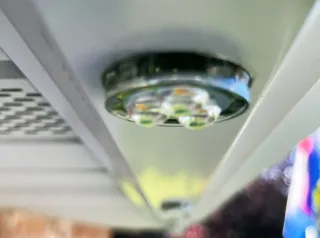
How do the included components of the InvisiLights kit enhance the lighting system?
Each component in the InvisiLights kit plays a crucial role in creating an effective and stunning lighting display:
Aluminum Channels: Provide a durable, weather-resistant housing for the LED lights, which helps in maintaining a clean and nearly invisible look during the day.
RGBW LED Lights: Offer vibrant, full-spectrum color and white light combinations, making it perfect for any occasion from festive holidays to elegant ambient lighting.
Data Boosters: Ensure that the signal remains strong across longer distances, which is crucial for larger installations.
Power Supply: Designed to efficiently handle the energy needs of the system without overload, ensuring safety and durability.
GFCI Outlet Adapter: Adds an extra layer of safety by protecting against electrical shorts and surges, particularly important in outdoor settings.
Controller: Provides the flexibility to customize and control the lighting sequences, colors, and patterns right from your smartphone or controller, adding convenience and advanced functionality to your lighting system.
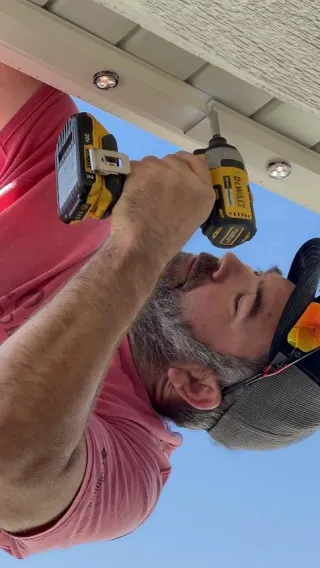
Can I use Invisilights year-round?
Absolutely! Invisilights are designed for versatile use throughout all seasons. Whether you're celebrating a special occasion, setting a mood for a party, Love your favorite sports team, or simply enhancing your home's ambiance, our lighting systems provide the perfect solution for any event, big or small.
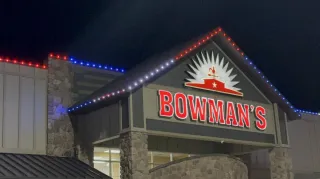
Can I set timers and events for Invisilights?
Yes, Invisilights feature advanced programmable settings that allow you to schedule lighting for specific events and automate timers. This functionality ensures that your lighting preferences are perfectly aligned with your lifestyle, turning on and off at predetermined times without any manual intervention.

Is it possible to achieve warm or soft white with Invisilights?
Absolutely, Invisilights are equipped with RGBW technology, which includes a dedicated white LED alongside the standard red, green, and blue LEDs. This addition allows the system to produce authentic warm white, soft white, and various other shades of white with greater accuracy and intensity compared to traditional RGB systems. This capability ensures that you can effortlessly tailor the lighting to fit the desired ambiance and aesthetic of any environment, providing precise control over both vibrant colors and the subtlety of different white tones.
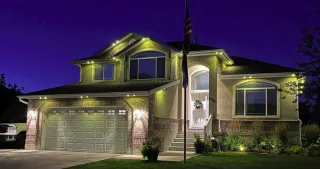
How do you ship your product?
Our products are shipped directly from our warehouse using reliable shipping carriers to ensure timely and safe delivery. Each product is securely packaged to prevent damage during transit, and we provide tracking information so you can follow your order’s journey to your doorstep.
Where are the controller and power supplies installed?
The controller and power supplies for Invisilights are typically installed in an accessible location such as a garage or utility room. These components connect to your home’s WiFi network, allowing seamless control over the lighting system via our user-friendly mobile app.
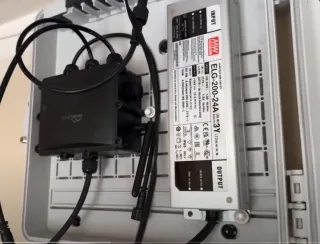
How long do Invisilights last?
Invisilights are engineered to last, with each LED bulb boasting a lifespan of over 50,000 hours. Given a typical usage of 10 hours per night, this translates to approximately 5,000 nights. This means your Invisilights could illuminate your home's exterior for nearly 14 years under these conditions, ensuring that your investment not only adds beauty but also long-term value to your property.
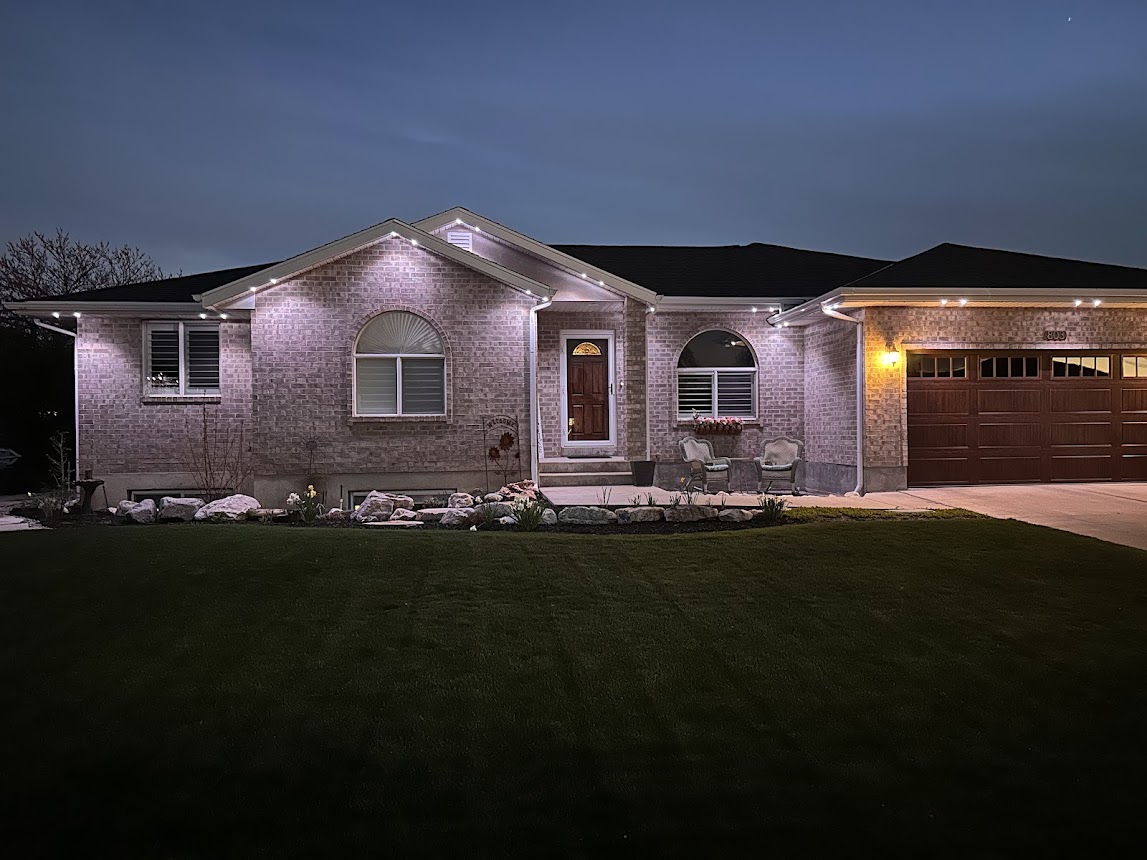
Are Invisilights dimmable?
Yes, all Invisilights are fully dimmable. This feature allows you to adjust the intensity of the light to suit various occasions, from a soft glow for a romantic evening to bright, vibrant colors for a festive celebration.

What types of custom channels are available?
Invisilights offers two types of custom channels, available in 40 different colors, ensuring a nearly invisible installation. These channels are designed to blend seamlessly with your home’s architecture, providing discreet yet effective lighting.

Can I control different zones independently?
Yes, the Invisilights system supports multiple zones which can be controlled independently or synchronized. This functionality allows for intricate lighting designs that can vary across different areas of your home, enhancing the overall impact and utility of your installation.
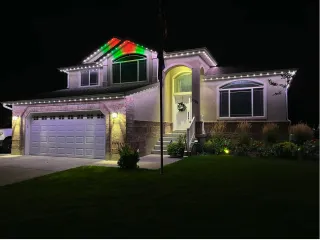
What is outdoor permanent lighting?
Permanent lighting refers to architectural-grade lighting systems that are installed permanently on your property to provide year-round illumination.
How does permanent lighting differ from traditional holiday lighting?
Unlike traditional holiday lighting, which is typically temporary and used only during specific seasons, permanent lighting is installed once and can be used throughout the year for various occasions
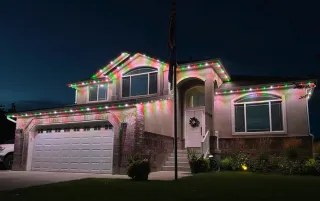
Discover Expert Tips on Our Blog
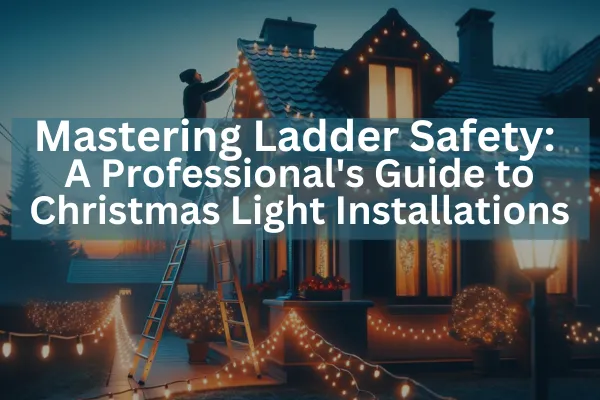
Mastering Ladder Safety: A Professional's Guide to Christmas Light Installations
As a professional Christmas light installer, your job involves creating stunning displays that bring joy and holiday cheer to your clients. However, the success of your installations relies not only on your creativity and technical skills but also on your commitment to safety, particularly when it comes to ladder use. Ladder-related accidents are all too common in the industry, often resulting in serious injuries, costly downtime, and even legal issues. By prioritizing ladder safety and adopting best practices, you can protect yourself, your team, and your business while delivering exceptional results for your clients.
Ladder Selection and Inspection
The foundation of ladder safety lies in choosing the right ladder for the job. As a professional, you'll encounter various installation scenarios that require different ladder types, such as step ladders, extension ladders, and articulating ladders. Assess the specific requirements of each project, considering factors such as the height of the installation, the type of surface you'll be working on, and the amount of space available. Always opt for a ladder that exceeds the minimum height needed, providing a comfortable working range without overreaching.
In addition to height, pay close attention to the ladder's weight capacity. Every ladder has a maximum weight rating that includes both the user's weight and the weight of any tools or materials they may be carrying. Overloading a ladder can lead to structural failure and serious accidents. As a professional, invest in heavy-duty ladders that can accommodate your needs and provide a stable working platform.
Before each use, conduct a thorough inspection of your ladder. Check for any signs of damage, such as bent or dented rails, cracked or worn steps, and missing or loose components. Pay special attention to the ladder's feet, ensuring they are intact and provide adequate traction. If you discover any issues, tag the ladder as unsafe and remove it from service until it can be repaired or replaced. Maintain a log of your ladder inspections to demonstrate your commitment to safety and compliance with industry standards.

Site Preparation and Ladder Placement
Once you've selected the appropriate ladder, the next step is to prepare the installation site and position the ladder safely. Begin by assessing the area for potential hazards, such as uneven ground, obstacles, or overhead power lines. If necessary, clear the area to create a stable, level surface for your ladder. Always maintain a safe distance from electrical hazards, following OSHA guidelines and local regulations.
When placing your ladder, follow the four-to-one rule: for every four feet of ladder height, position the base one foot away from the wall or structure. This ensures a stable angle that minimizes the risk of the ladder tipping or slipping. If possible, secure the top of the ladder to the structure using ladder stabilizers or tie-offs for added stability. In cases where the ladder cannot be secured, have a spotter hold the base to prevent shifting or sliding.
Advanced Climbing Techniques for Professionals
As a professional, you'll face challenging installation scenarios that require advanced climbing techniques. Always maintain three points of contact with the ladder, keeping your body centered between the rails. Avoid overreaching or leaning to one side, as this can cause the ladder to tip. If you need to reach a distant spot, climb down and reposition the ladder closer to your work area.
When navigating around obstacles or working at difficult angles, use climbing aids such as ladder jacks, standoffs, or stabilizers to maintain stability and minimize ladder movement. These devices allow you to work more efficiently while reducing the risk of falls or injuries.

Professional-Grade Safety Gear and Equipment
Investing in high-quality safety gear is essential for any professional Christmas light installer. Start with a pair of sturdy, non-slip work boots that provide good traction and support on the ladder rungs. Choose weather-appropriate clothing that allows for ease of movement and visibility, avoiding loose or baggy items that could snag on the ladder or decorations.
To keep your hands free while climbing, use a tool belt or lanyard to secure your tools and materials. For heavier items or larger installations, consider using a hoist system to lift supplies to your working height. When working on steep roofs or elevated structures, implement fall protection systems, such as harnesses and anchors, to prevent serious injuries in case of a slip or fall.
Having a trained spotter or assistant on the ground is crucial for any professional installation. They can help stabilize the ladder, pass tools and materials, and quickly respond in case of an emergency. Ensure that all team members are trained in ladder safety best practices and communication protocols to maintain a safe and efficient work environment.

Ladder Maintenance, Repair, and Storage Protocols
Regular maintenance is key to keeping your ladders in top condition and extending their lifespan. Establish a maintenance schedule that includes routine inspections, cleaning, and repairs. After each use, clean your ladders to remove dirt, debris, and moisture that can lead to corrosion or deterioration. Pay attention to the ladder's moving parts, such as hinges and locks, lubricating them as needed to ensure smooth operation.
If you identify any issues during your inspections, address them promptly. Minor problems, such as loose bolts or worn safety labels, can often be fixed on-site. More serious damage, such as bent rails or cracked fiberglass, may require professional repairs or replacement. Keep accurate records of all maintenance and repairs performed on your ladders to demonstrate your due diligence and commitment to safety.
Proper storage is equally important to maintain the integrity of your ladders. Store them in a cool, dry place, away from direct sunlight and extreme temperatures. Avoid storing ladders in areas with high humidity or chemical exposure, as this can lead to corrosion or weakening of the materials. Use ladder racks or wall-mounted brackets to keep your ladders organized and easily accessible, while preventing damage from improper storage.

Emergency Response and Incident Reporting
Despite your best efforts to prioritize safety, accidents can still happen. As a professional, it's essential to have a comprehensive emergency response plan in place. Train all team members on emergency procedures, including how to contact emergency services, perform basic first aid, and safely evacuate an injured person from a ladder or elevated work area. Regularly review and practice your emergency response plan to ensure that everyone knows their roles and responsibilities.
In the event of a ladder-related incident, document the details thoroughly and report it to the appropriate parties, such as your insurance provider and any relevant regulatory agencies. Conduct a thorough investigation to identify the root cause of the accident and implement corrective actions to prevent future occurrences. Use these incidents as opportunities to review and update your safety protocols, incorporating any new industry best practices or equipment advancements.
Ladder safety is a critical component of any successful Christmas light installation business. By prioritizing safety and adopting best practices, you demonstrate your professionalism, protect your team, and ensure the long-term success of your company. Invest in ongoing training and education for yourself and your employees, staying up-to-date with the latest safety techniques and equipment.
Lead by example on every installation, demonstrating a strong commitment to safety and setting the standard for your team. By fostering a culture of safety, you not only reduce the risk of accidents and injuries but also improve the quality and efficiency of your work. Your clients will appreciate your professionalism and attention to detail, leading to increased referrals and a stellar reputation in the industry.
Remember, the most stunning Christmas light displays are those that are installed safely and responsibly. By mastering ladder safety and making it a top priority, you'll be well on your way to building a thriving, successful business that brings joy and holiday magic to your community for years to come.

1. Q: What factors should I consider when choosing a ladder for a Christmas light installation?
A: When selecting a ladder, consider the height of the installation, the type of surface you'll be working on, and the amount of space available. Always choose a ladder that exceeds the minimum height needed and has a weight capacity that accommodates both your weight and the weight of your tools and materials.
2. Q: How often should I inspect my ladders?
A: Conduct a thorough inspection of your ladders before each use, checking for damage, wear, and missing or loose components. Maintain a log of your ladder inspections to demonstrate your commitment to safety and compliance with industry standards.
3. Q: What is the four-to-one rule for ladder placement?
A: The four-to-one rule states that for every four feet of ladder height, position the base one foot away from the wall or structure. This ensures a stable angle that minimizes the risk of the ladder tipping or slipping.
4. Q: How can I maintain stability when working on a ladder in challenging situations?
A: Use climbing aids such as ladder jacks, standoffs, or stabilizers to maintain stability and minimize ladder movement when navigating around obstacles or working at difficult angles. Always maintain three points of contact with the ladder and avoid overreaching or leaning to one side.
5. Q: What safety gear should I invest in as a professional Christmas light installer?
A: Invest in high-quality, non-slip work boots, weather-appropriate clothing, tool belts or lanyards for securing tools and materials, and fall protection systems such as harnesses and anchors for elevated installations. Always prioritize safety gear that meets industry standards and regulations.

6. Q: Why is it important to have a spotter or assistant during installations?
A: Having a trained spotter or assistant on the ground is crucial for stabilizing the ladder, passing tools and materials, and quickly responding in case of an emergency. They play a vital role in maintaining a safe and efficient work environment.
7. Q: How should I store my ladders to ensure their longevity and safety?
A: Store your ladders in a cool, dry place, away from direct sunlight and extreme temperatures. Use ladder racks or wall-mounted brackets to keep them organized and easily accessible while preventing damage from improper storage.
8. Q: What should I do if I identify damage or wear on my ladders during an inspection?
A: If you identify minor issues like loose bolts or worn safety labels, address them promptly on-site. For more serious damage, such as bent rails or cracked fiberglass, remove the ladder from service and seek professional repairs or replacement.
9. Q: What should be included in an emergency response plan for ladder-related incidents?
A: An emergency response plan should include procedures for contacting emergency services, performing basic first aid, and safely evacuating an injured person from a ladder or elevated work area. Regularly review and practice your emergency response plan with all team members.
10. Q: How can I foster a culture of safety within my Christmas light installation business?
A: Lead by example on every installation, demonstrating a strong commitment to safety and setting the standard for your team. Invest in ongoing training and education, stay up-to-date with industry best practices, and prioritize safety in all aspects of your business operations.



Copyright ©2025 All Right Reserved website designed by christmaslights.io
Terms of Service / Privacy Policy
Have questions or need assistance?
Contact us at (855)619-LITE


